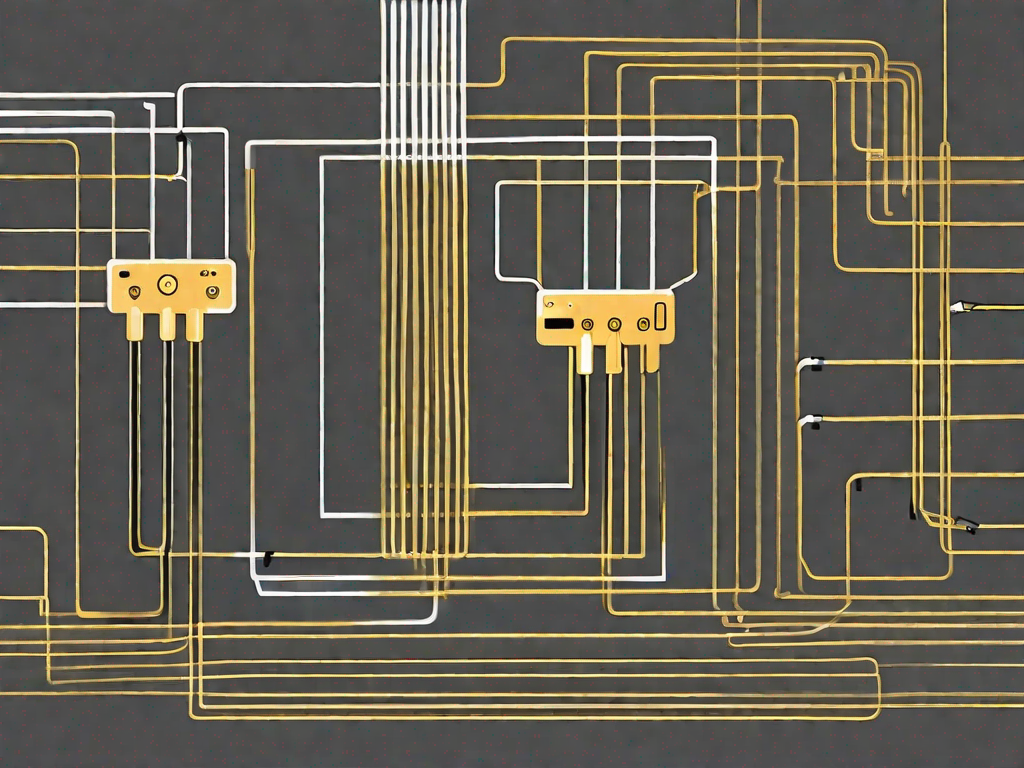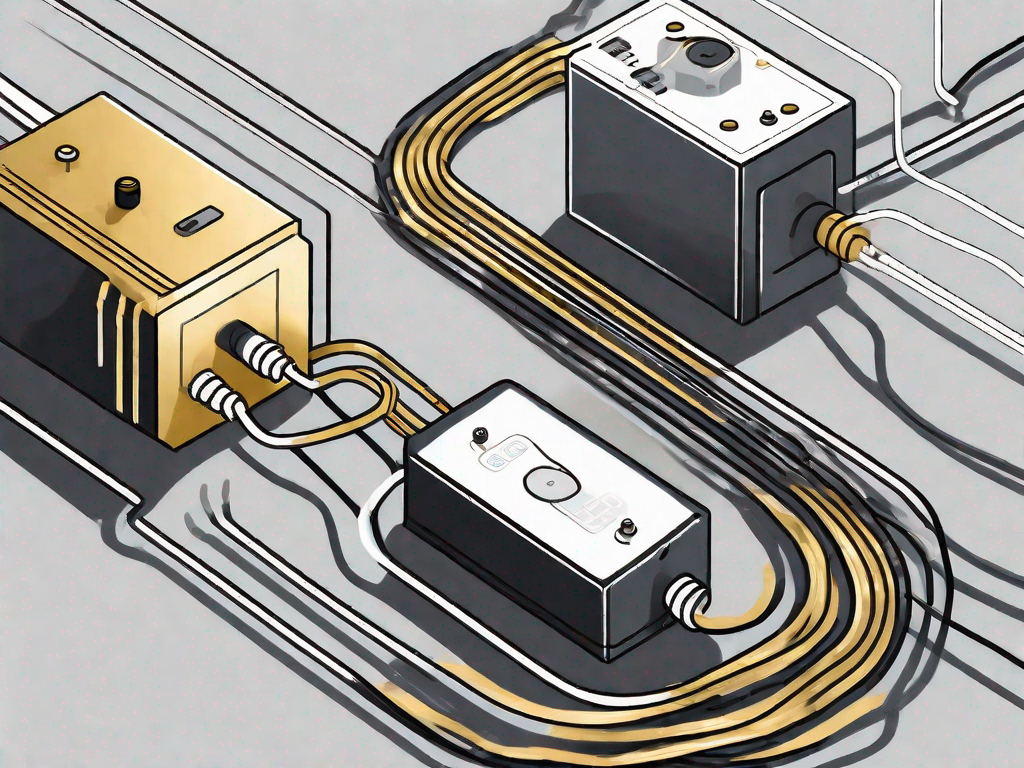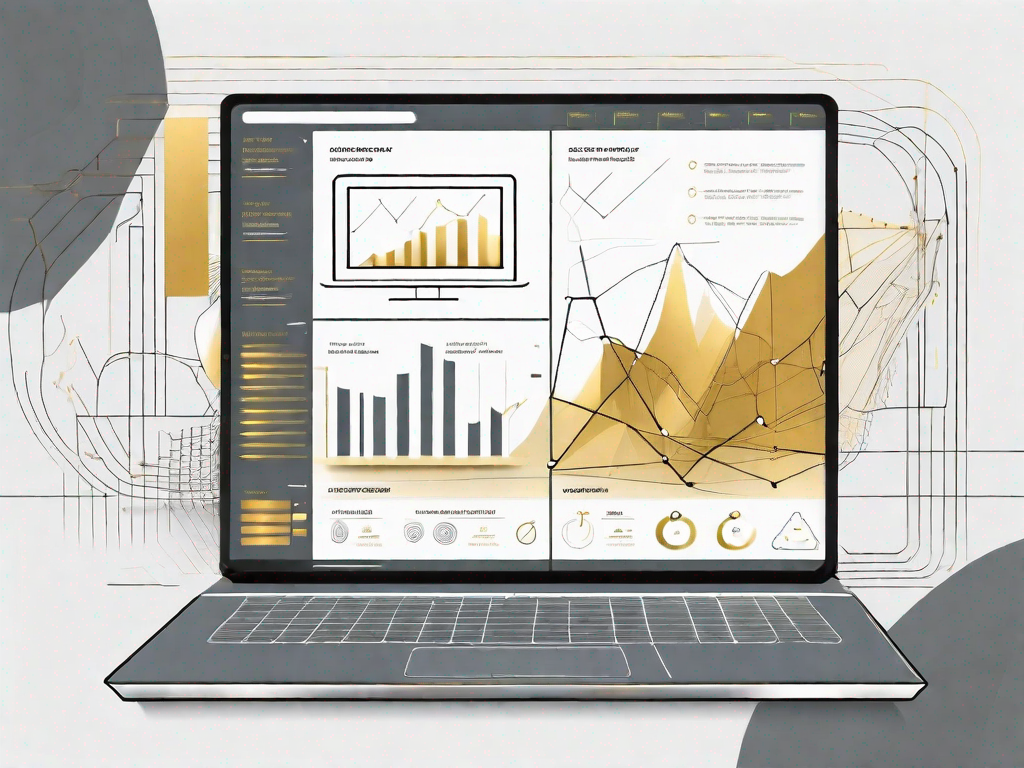
Interconnection of multiple EST4 panels
The interconnection of multiple EST4 panels is an important aspect of building automation systems. EST4 panels are widely used in commercial and industrial buildings for fire alarm and emergency communication purposes. Understanding the basics of EST4 panels is crucial before diving into the intricacies of interconnecting them.
Understanding the Basics of EST4 Panels
EST4 panels are advanced fire alarm control panels that provide comprehensive monitoring, detection, and control capabilities. These panels are designed to ensure the safety and security of occupants in a building by detecting fire and other emergency events promptly. Let’s delve deeper and explore the definition and function of EST4 panels.
EST4 panels serve as the central hub for fire alarm systems. They receive information from smoke detectors, heat detectors, and other sensors throughout the building. These panels are responsible for processing the data, activating alarms, and initiating emergency protocols. They are capable of monitoring multiple zones and providing real-time feedback to users and emergency responders.
One of the key features of EST4 panels is their ability to handle complex algorithms for efficient event detection and response. These panels are equipped with powerful processors that can quickly analyze data from various sensors. By utilizing advanced algorithms, the panels can accurately identify potential fire or emergency situations, minimizing false alarms and ensuring timely response.
In addition to their processing capabilities, EST4 panels also boast a wide range of features that enhance their effectiveness and reliability. For instance, these panels are equipped with advanced graphic displays that provide users with clear and intuitive visual information. This allows users to quickly assess the status of the fire alarm system and take appropriate actions.
Furthermore, EST4 panels are designed with intuitive user interfaces, making them easy to operate and navigate. Users can easily access and control various functions of the fire alarm system, such as adjusting sensitivity levels, configuring alarm settings, and conducting system tests. The user-friendly interface ensures that building occupants and authorized personnel can effectively interact with the panels during emergency situations.
Another notable feature of EST4 panels is their network connectivity. These panels can be integrated into a larger network of fire alarm systems, allowing for centralized monitoring and control. This connectivity enables seamless communication between different panels, ensuring that information is shared and coordinated across the entire system. It also facilitates remote access capabilities, allowing authorized personnel to monitor and control the EST4 panels from a remote location, enhancing convenience and efficiency.
In conclusion, EST4 panels are advanced fire alarm control panels that play a crucial role in ensuring the safety and security of buildings. With their comprehensive monitoring, detection, and control capabilities, these panels serve as the central hub for fire alarm systems. Equipped with advanced features such as powerful processors, graphic displays, intuitive user interfaces, and network connectivity, EST4 panels provide efficient and reliable fire detection and response.
The Importance of Interconnecting EST4 Panels
Interconnecting EST4 panels enables seamless communication and coordination between different zones and segments of a building. This interconnected system offers numerous benefits but beware of the potential risks associated with a lack of interconnection.
When it comes to fire safety, every second counts. That’s why interconnecting EST4 panels is crucial in ensuring the safety of occupants and property. By allowing for centralized monitoring and control of the entire fire alarm system, interconnected panels create a network that can swiftly detect and respond to any fire incidents. This means that when a fire is detected in one area, the interconnected panels communicate the alarm signal to all relevant zones, triggering immediate action.
Imagine a scenario where a fire breaks out in a large office building. Without interconnection, each EST4 panel would function independently, limiting the ability to share information and coordinate responses. This lack of coordination can lead to delayed detection, slower response times, and increased risks to occupants and property. In contrast, with interconnected panels, the alarm signal spreads throughout the building, alerting everyone to the danger and enabling a quick and coordinated response.
But the benefits of interconnection don’t stop there. In addition to enhancing safety, interconnected EST4 panels also facilitate remote monitoring and management. With this capability, building owners and facility managers can keep a close eye on the fire alarm system from a central location. This not only reduces the need for physical presence on-site but also allows for immediate action in case of any issues or emergencies.
Moreover, troubleshooting and maintenance become more efficient when panels are interconnected. In a non-interconnected system, issues in one area may go unnoticed by other panels, making it challenging to identify and address problems promptly. On the other hand, with interconnected panels, any faults or malfunctions can be quickly detected and isolated, ensuring that the fire alarm system is always in optimal working condition.
Interconnecting EST4 panels is not just a matter of convenience; it is a crucial aspect of fire safety. By creating a network that enables seamless communication and coordination, interconnected panels improve the effectiveness of emergency procedures, reduce response times, and ultimately save lives. So, when it comes to fire safety, don’t underestimate the power of interconnection.
Steps to Interconnect Multiple EST4 Panels
Interconnecting multiple EST4 panels requires careful planning and execution. By following a step-by-step approach, you can ensure a seamless interconnection process.
Preparing for the Interconnection Process
Before beginning the interconnection process, it is essential to gather the necessary information about the building’s layout and existing EST4 panels. This includes understanding the zoning structure, identifying the primary panel, and determining the communication protocols between the panels.
When gathering information about the building’s layout, it is important to consider factors such as the number of floors, the size of each floor, and the location of critical areas that require fire detection and alarm systems. By understanding the building’s layout, you can determine the optimal placement of the EST4 panels for effective coverage and interconnection.
Identifying the primary panel is crucial as it will serve as the central control unit for the interconnected EST4 panels. The primary panel will be responsible for receiving and processing information from other panels, ensuring a coordinated response in case of an emergency. It is important to choose a primary panel that has the necessary capacity and capabilities to handle the interconnection.
Determining the communication protocols between the panels is vital for seamless integration. EST4 panels typically use industry-standard protocols such as RS-485 or Ethernet for communication. Understanding the communication protocols will help in configuring the panels and ensuring compatibility between them.
Detailed Guide to Interconnection
Interconnecting multiple EST4 panels involves establishing communication links between the panels and configuring them to work together. This encompasses settings such as panel addresses, network connections, and synchronization of time and date. Refer to the manufacturer’s guidelines and documentation for detailed instructions on interconnecting EST4 panels.
When establishing communication links between the panels, it is important to ensure proper wiring and connections. Each panel should be connected using the appropriate cables and connectors, following the manufacturer’s recommendations. It is crucial to double-check the connections to avoid any issues during the interconnection process.
Configuring the panel addresses is an essential step in the interconnection process. Each panel should have a unique address to ensure proper identification and communication. The panel addresses can be set using the panel’s configuration software or through physical switches on the panel itself. It is important to assign addresses in a logical manner, considering factors such as the panel’s location and its role in the overall system.
Network connections play a crucial role in interconnecting EST4 panels. Depending on the communication protocols used, the panels may need to be connected to a network switch or a central control unit. It is important to ensure that the network connections are stable and reliable to facilitate seamless communication between the panels.
Synchronization of time and date is necessary for accurate event logging and coordination between the interconnected panels. Each panel should be synchronized with a common time source, such as an NTP (Network Time Protocol) server or a GPS (Global Positioning System) receiver. This ensures that all panels have consistent time and date information, enabling synchronized actions in case of an emergency.
Throughout the interconnection process, it is crucial to follow the manufacturer’s guidelines and documentation. The manufacturer’s instructions provide detailed information on the specific steps and considerations for interconnecting EST4 panels. By adhering to these guidelines, you can ensure a successful and reliable interconnection.
Troubleshooting Common Issues in EST4 Panel Interconnection
Despite careful planning, issues can arise during or after the interconnection process. Being aware of common problems and their solutions can help you overcome any obstacles and ensure the smooth operation of interconnected EST4 panels.
Interconnecting EST4 panels is a complex process that requires attention to detail and technical expertise. However, even with the best planning, problems can occur. In this expanded version, we will explore some common issues that may arise during the interconnection process and provide effective solutions to resolve them.
Identifying Common Problems
Common issues in EST4 panel interconnection may include network communication errors, address conflicts, or synchronization problems. These issues can disrupt the seamless operation of interconnected panels and affect the overall performance of your system.
When troubleshooting interconnection problems, it is essential to thoroughly inspect the interconnection setup and identify any deviations from the intended configuration. This can include checking cable connections, verifying network settings, and ensuring that all panels are properly powered.
Analyze error messages, logs, and system diagnostics to pinpoint the root cause of the problem. This will help you understand the underlying issue and determine the most appropriate solution.
Effective Solutions for Interconnection Issues
Resolving interconnection issues often involves adjusting network settings, reassigning panel addresses, or updating firmware and software versions. These solutions can help restore the proper functioning of interconnected EST4 panels.
Adjusting network settings may involve configuring IP addresses, subnet masks, or gateway settings to ensure proper communication between panels. This can be done through the panel’s user interface or by accessing the network configuration settings directly.
In cases where address conflicts occur, it may be necessary to reassign panel addresses to avoid overlapping. This can be done by accessing the panel’s configuration settings and modifying the address assignment accordingly.
Updating firmware and software versions is another effective solution for interconnection issues. Manufacturers often release updates that address known bugs or compatibility issues. It is crucial to consult the manufacturer’s support resources, technical documentation, and customer service for specific troubleshooting steps and guidance.
Before performing any updates, it is important to backup all panel configurations and settings to avoid any potential data loss. This will allow you to restore the system to its previous state if any issues arise during the update process.
In conclusion, troubleshooting common issues in EST4 panel interconnection requires a systematic approach and a good understanding of the underlying technology. By identifying common problems and implementing effective solutions, you can ensure the smooth operation of interconnected EST4 panels and maintain the reliability of your system.
Maintaining and Optimizing Your Interconnected EST4 Panels
Maintaining and optimizing your interconnected EST4 panels is essential to ensure their long-term reliability and performance. Regular maintenance and optimization practices can help prevent issues and maximize the effectiveness of your fire alarm system.
When it comes to regular maintenance, there are several key tips to keep in mind. First and foremost, it is important to regularly inspect and test all components of the interconnected system. This includes not only the panels themselves, but also the detectors, communication equipment, and power supplies. By following the manufacturer’s recommendations for inspection schedules, cleaning procedures, and replacement intervals, you can ensure that your system remains in top condition.
Documenting all maintenance activities is also crucial. By keeping a record of system health and compliance with regulations, you can easily track any changes or issues that may arise. This documentation can be invaluable when it comes to troubleshooting or demonstrating compliance with regulatory requirements.
Optimizing the Performance of Interconnected Panels
While regular maintenance is important, optimizing the performance of your interconnected EST4 panels can take your fire alarm system to the next level. One way to achieve this is by implementing advanced features such as event logging, data analytics, and integration with other building management systems.
Event logging allows you to track and analyze system behavior over time. By capturing and storing information about alarms, faults, and other events, you can gain valuable insights into the performance of your system. This data can be used to identify trends, pinpoint areas for improvement, and make informed decisions about system upgrades or modifications.
Data analytics is another powerful tool for optimizing the performance of interconnected panels. By leveraging the data collected from your system, you can apply advanced analytics techniques to uncover hidden patterns or anomalies. This can help you identify potential issues before they become major problems, allowing for proactive maintenance and minimizing downtime.
Integration with other building management systems is yet another way to enhance the performance of your interconnected panels. By integrating your fire alarm system with systems such as HVAC, access control, or video surveillance, you can create a more holistic and efficient building management solution. This integration enables seamless communication and coordination between different systems, improving overall safety and security.
In conclusion, interconnection of multiple EST4 panels is crucial for creating a robust and efficient fire alarm system in commercial and industrial buildings. By understanding the basics of EST4 panels, recognizing the benefits and risks of interconnection, following proper interconnection procedures, troubleshooting common issues, and maintaining and optimizing your interconnected panels, you can ensure the safety and security of building occupants, minimize downtime, and meet regulatory requirements.


